Analysis of Shock Wave Interaction with an Obstacle by Coupling Pressure Measurements and Visualization
Abstract
:1. Introduction
2. Materials and Methods
2.1. Experimental Bench
2.2. Obstacle Configuration
3. Analysis by Coupling Pressure Measurements and Visualization
4. Quantitative Measurements by Visualization
5. Conclusions
Author Contributions
Funding
Institutional Review Board Statement
Informed Consent Statement
Data Availability Statement
Acknowledgments
Conflicts of Interest
References
- Dechy, N. The damage of the Toulouse disaster, 21 September 2001. Loss Prev. Bull. 2004, 179, 3–11. [Google Scholar]
- Rigby, S.E.; Lodge, T.J.; Alotaibi, S.; Barr, A.D.; Clarke, S.D.; Langdon, G.S.; Tyas, A. Preliminary yield estimation of the 2020 Beirut explosion using video footage from social media. Shock Waves 2020, 30, 671–675. [Google Scholar] [CrossRef]
- Aouad, C.J.; Chemissany, W.; Mazzali, P.; Temsah, Y.; Jahami, A. Beirut explosion: TNT equivalence from the fireball evolution in the first 170 milliseconds. Shock Waves 2021, 31, 813–827. [Google Scholar] [CrossRef]
- Dewey, J.M. The TNT and ANFO equivalences of the Beirut explosion. Shock Waves 2021, 31, 95–99. [Google Scholar] [CrossRef]
- Reichenbach, H.; Neuwald, P.; Kuhl, A.L. Role of Precision Laboratory Experiments in the Understanding of Large-Scale Blast Phenomena, Julius J. Meszaros Lecture. In Proceedings of the International Symposium on Military Aspects of Blast and Shock (MABS17), Las Vegas, NV, USA, 10–14 June 2002. [Google Scholar]
- Neuwald, P.; Reichenbach, H. Detonations in Front of a Tunnel Entrance: A Parametric Small-Scale Study. In Proceedings of the International Symposium on Military Aspects of Blast and Shock (MABS17), Las Vegas, NV, USA, 10–14 June 2002. [Google Scholar]
- Smith, P.D.; Rose, T.A.; Ng, S.H. The influence of areal density on the shielding and channeling of blast by buildings. In Proceedings of the International Symposium on Military Aspects of Blast and Shock (MABS18), Bad Reichenhall, Germany, 27 September–1 October 2004. [Google Scholar]
- Ripley, R.C.; Von Rosen, B.; Ritzel, D.V.; Whitehouse, D.R. Small-scale modeling of explosive blasts in urban scenarios. In Proceedings of the 21st International Symposium on Ballistics, Adelaide, Australia, 19–23 April 2004. [Google Scholar]
- Miura, A.; Matsuo, A.; Mizukaki, T.; Shiraishi, T.; Utsunomiya, G.; Takayama, K.; Nojiri, I. Reflection and Diffraction Phenomena of Blast Wave Propagation in Nuclear Fuel Cycle Facility. Jpn. Soc. Mech. Eng. 2004, 47, 287–292. [Google Scholar] [CrossRef] [Green Version]
- Rose, T.A.; Smith, P.D.; May, J.H. The interaction of oblique blast waves with buildings. Shock Waves 2006, 16, 35–44. [Google Scholar] [CrossRef]
- Edgerton, H.E. Shock Wave Photography of Large Subjects in Daylight. Rev. Sci. Instrum. 1958, 29, 171–172. [Google Scholar] [CrossRef]
- Dewey, J.M.; Mcmillin, D.J.; Classen, D.F. Photogrammetry of spherical shocks reflected from real and ideal surfaces. J. Fluid Mech. 1977, 81, 701–717. [Google Scholar] [CrossRef]
- Kleine, H.; Timofeev, E.; Takayama, K. Laboratory-scale blast wave phenomena—Optical diagnostics and applications. Shock Waves 2005, 14, 343–357. [Google Scholar] [CrossRef]
- Hargather, M.J.; Settles, G.S. Optical measurement and scaling of blasts from gram-range explosive charges. Shock Waves 2007, 17, 215–223. [Google Scholar] [CrossRef]
- Hargather, M.J.; Settles, G.S. Retroreflective shadowgraph technique for large-scale flow visualization. Appl. Opt. 2009, 48, 4449–4457. [Google Scholar] [CrossRef] [PubMed]
- Hargather, M.J. Background-oriented schlieren diagnostics for large-scale explosive testing. Shock Waves 2013, 23, 529–536. [Google Scholar] [CrossRef]
- Maillot, Y.; Sochet, I.; Vinçont, J.-Y.; Grillon, Y. Experimental evaluation of a shock wave propagation impacting surface irregularity. In Proceedings of the International Symposium on Military Aspects of Blast and Shock (MABS25), The Hague, The Netherlands, 23–28 September 2018. [Google Scholar]
- Sochet, I.; Sauvan, P.; Boulanger, R.; Nozeres, F. External explosion in an industrial site. J. Loss Prev. Process. Ind. 2014, 29, 56–64. [Google Scholar] [CrossRef]
- Gault, K.; Sochet, I.; Hakenholz, L.; Collignon, A. Influence of the explosion center on shock wave propagation in a confined room. Shock Waves 2020, 30, 473–481. [Google Scholar] [CrossRef]
- Dewey, J.M.; Sochet, I. Analysis of the blast waves from the explosions of stoichiometric, rich, and lean propane/oxygen mixtures. Shock Waves 2021, 31, 165–173. [Google Scholar] [CrossRef]
- Slangen, P.; Lauret, P.; Aprin, L.; Heymes, F.; Lecysyn, N. Optical characterizations of falling droplets interacting with shock wave. In Proceedings of the 10th Pacific Symposium on Flow Visualization and Image Processing (PSFVIP10), Napoli, Italy, 15–18 June 2015. [Google Scholar]
- Kinney, G.F.; Graham, K.J. Explosive Shocks in Air; Springer: New York, NY, USA, 1985. [Google Scholar]
- McKinzie, M.G.; Cochran, T.B.; Norris, R.S.; Arkin, W.M. The US Nuclear War Plan: A Time for Change; Natural Resources Defense Council: Washington, DC, USA, 2001. [Google Scholar]
- U.S. Department of the Army, Unified Facilities Criteria (UFC). Structures to Resist the Effects of Accidental Explosions; UFC-3-340-02; Unified Facilities Criteria (UFC): Washington, DC, USA, 2008.
- Boutillier, J.; Ehrhardt, L.; De Mezzo, S.; Deck, C.; Magnan, P.; Naz, P.; Willinger, R. Evaluation of the existing triple point path models with new experimental data: Proposal of an original empirical formulation. Shock Waves 2017, 28, 243–252. [Google Scholar] [CrossRef]
- Xiao, W.; Andrae, M.; Gebbeken, N. Development of a new empirical formula for prediction of triple point path. Shock Waves 2020, 30, 677–686. [Google Scholar] [CrossRef]

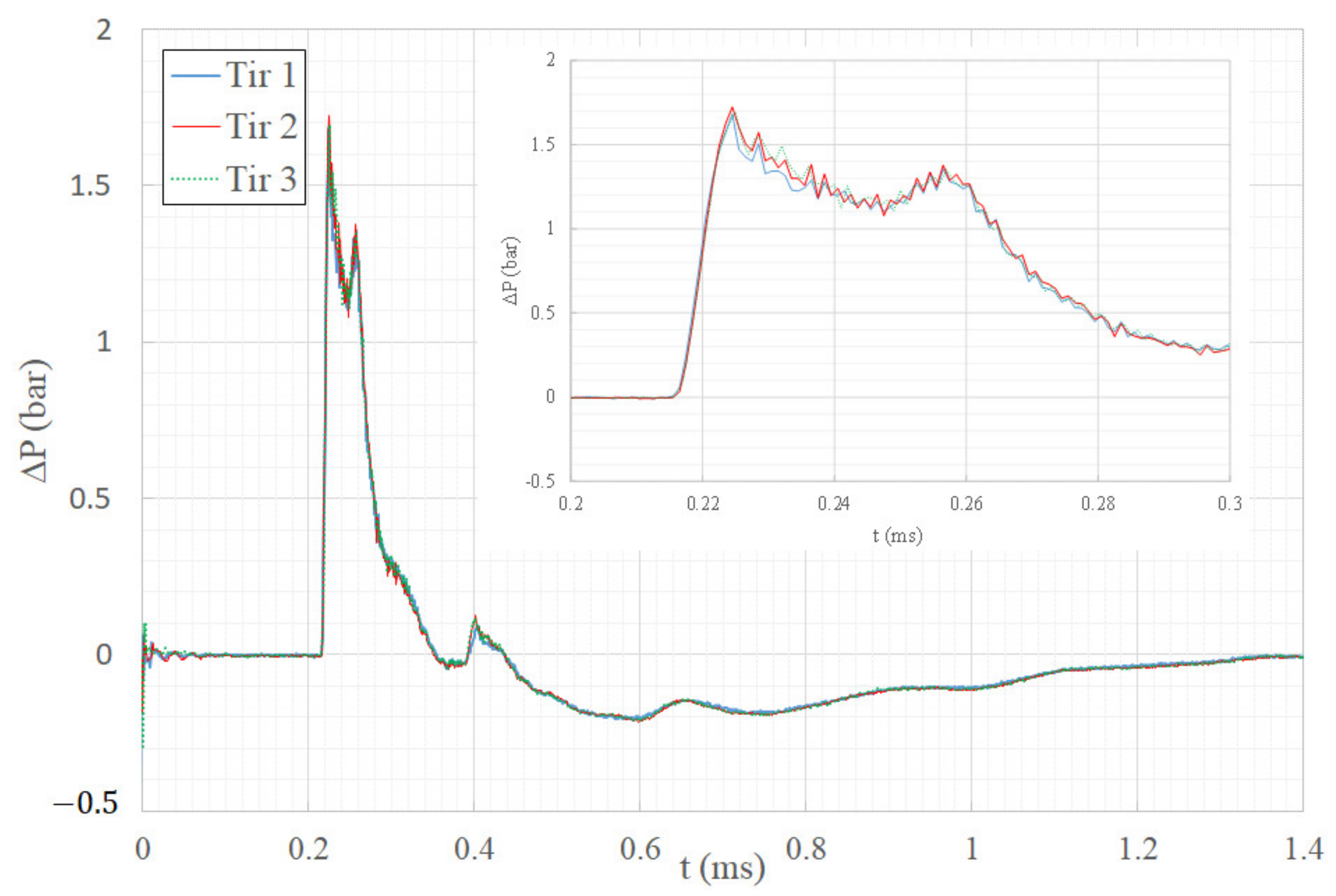
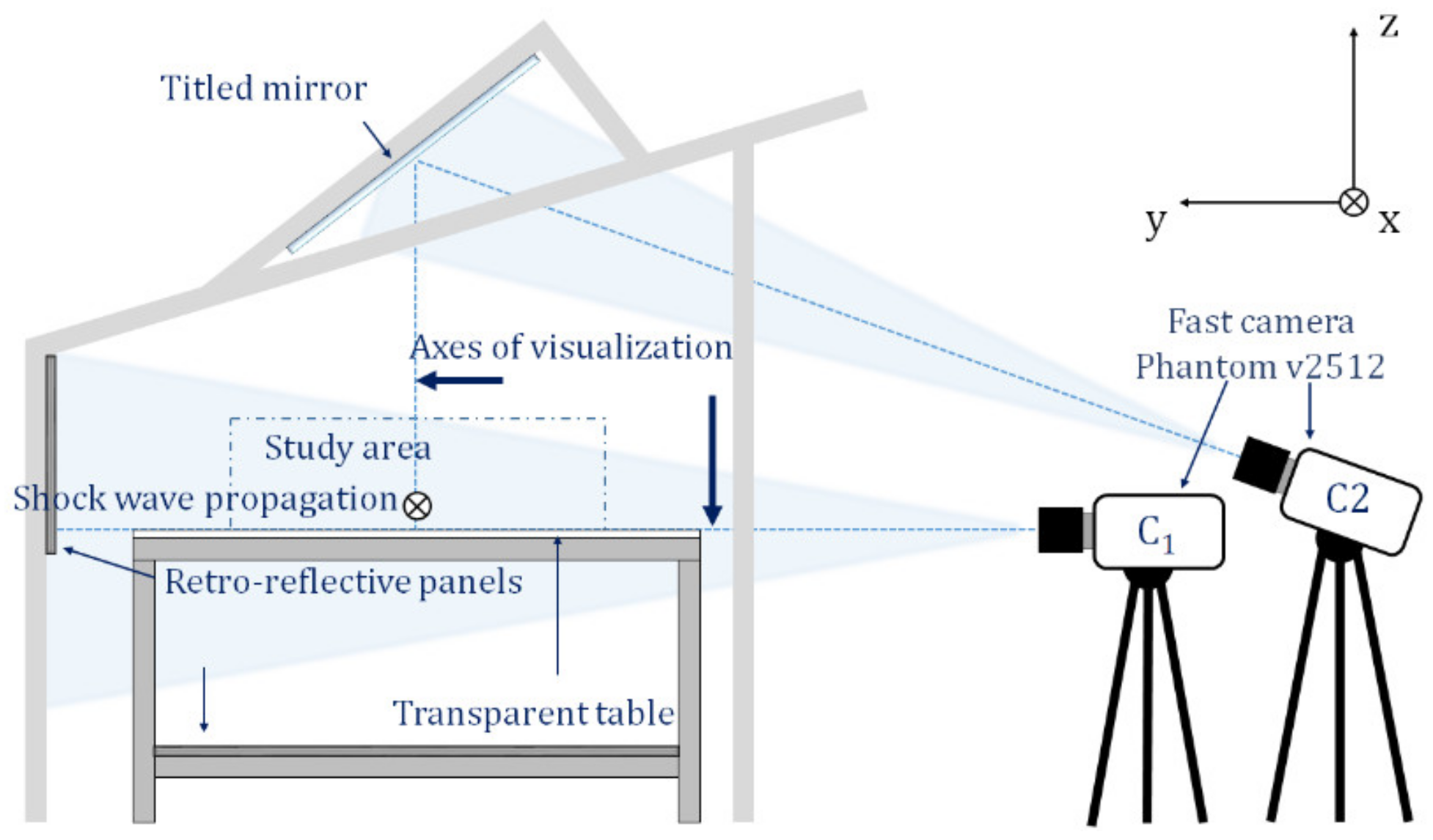


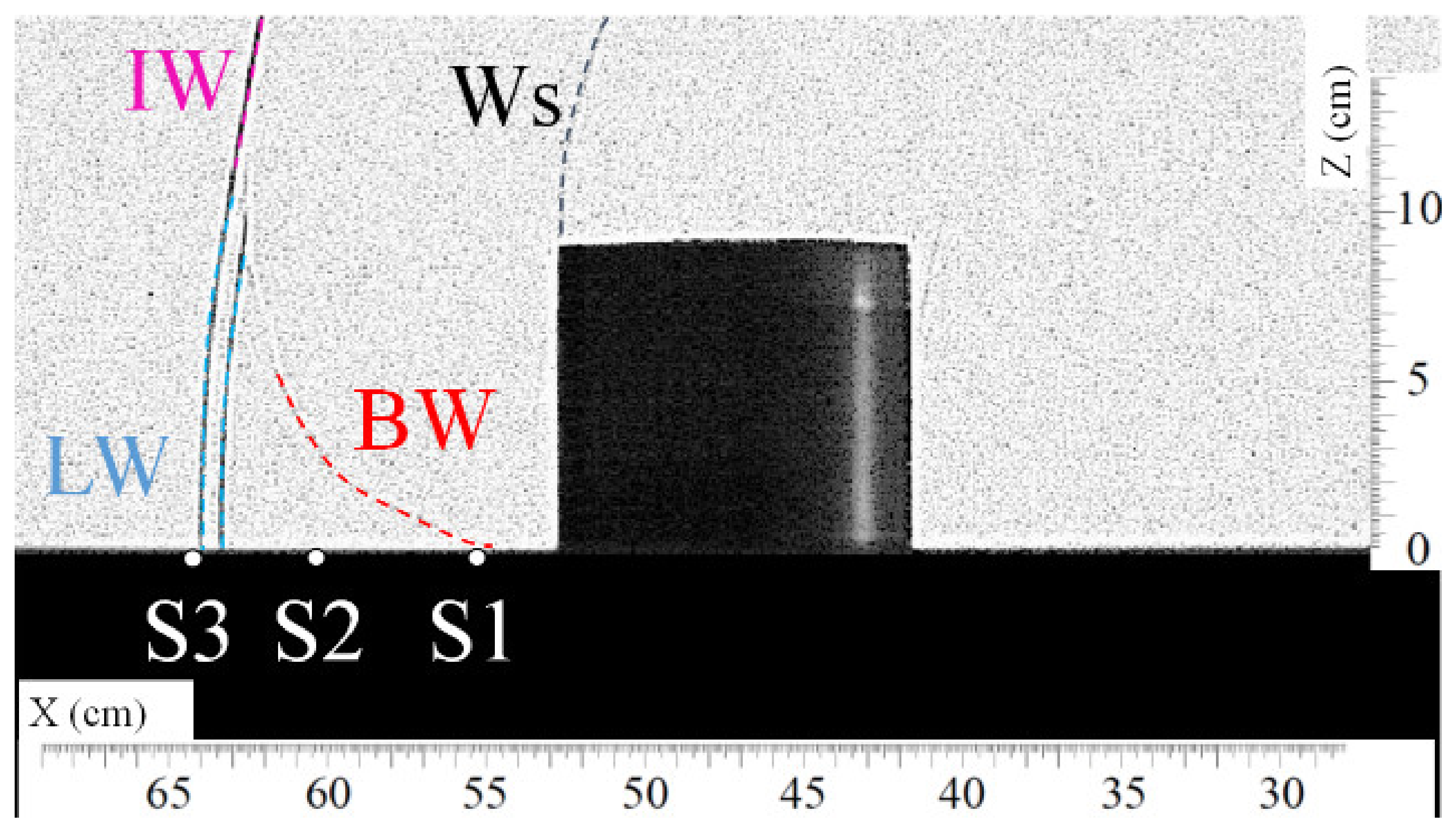
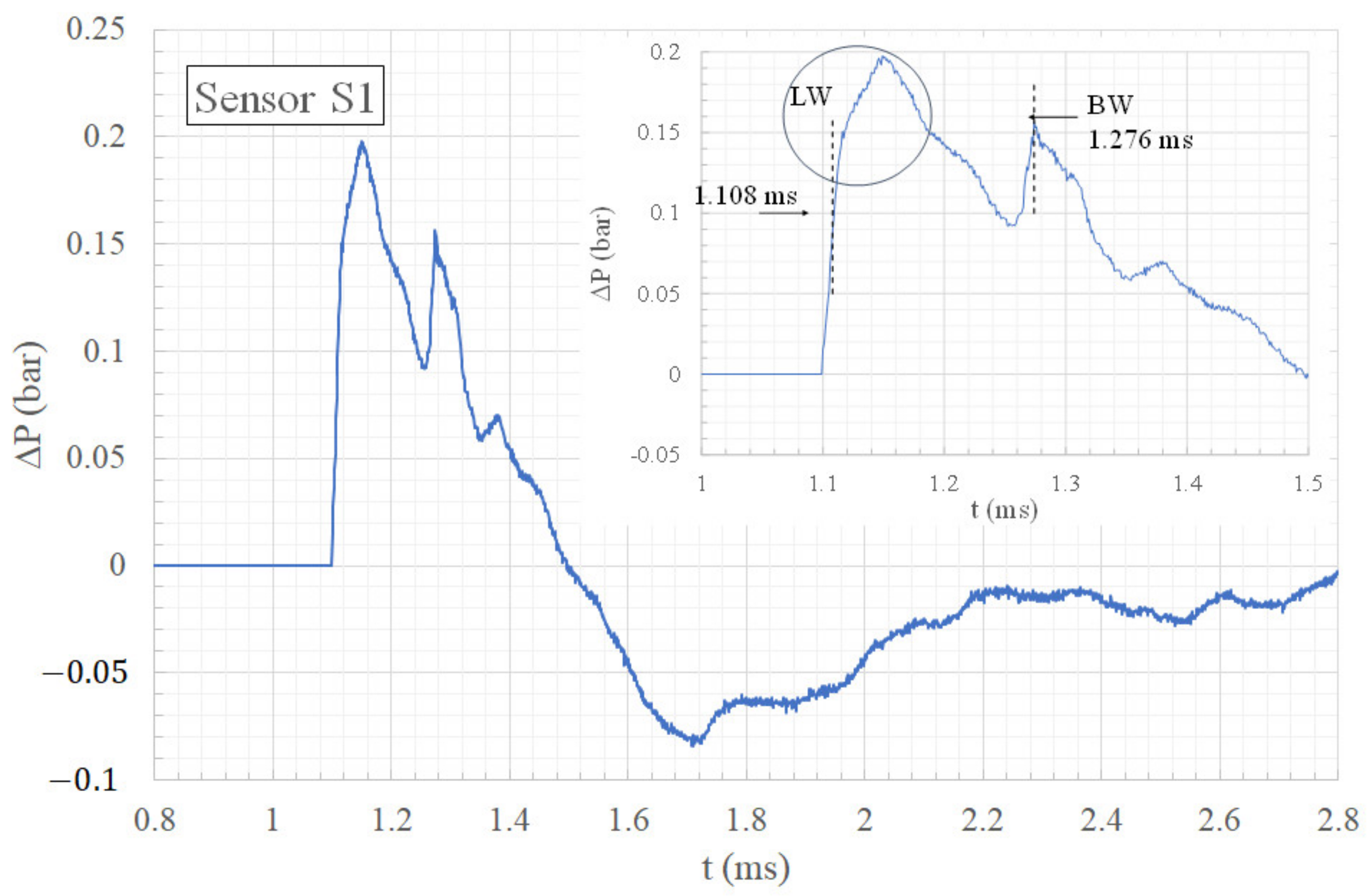



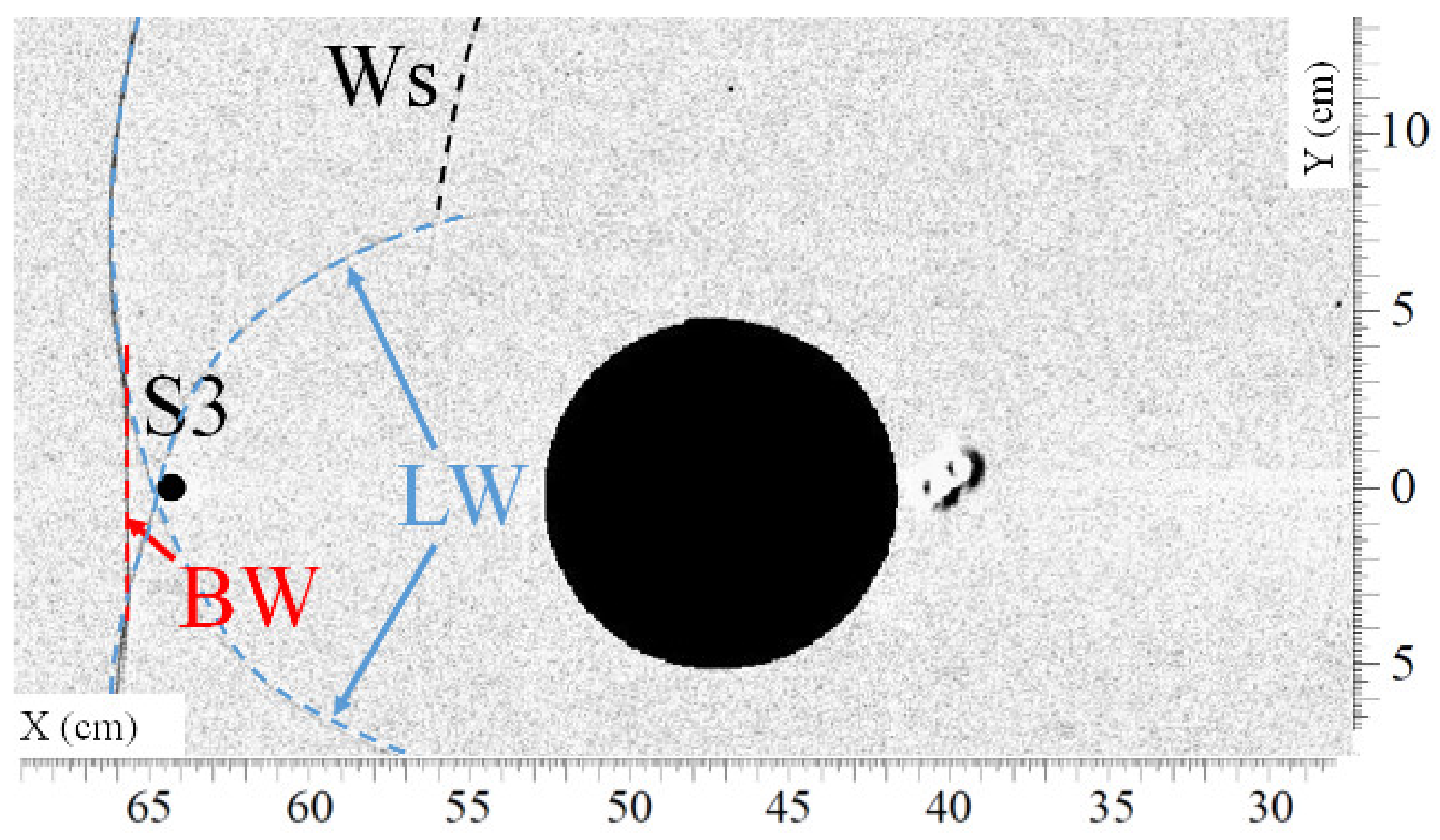


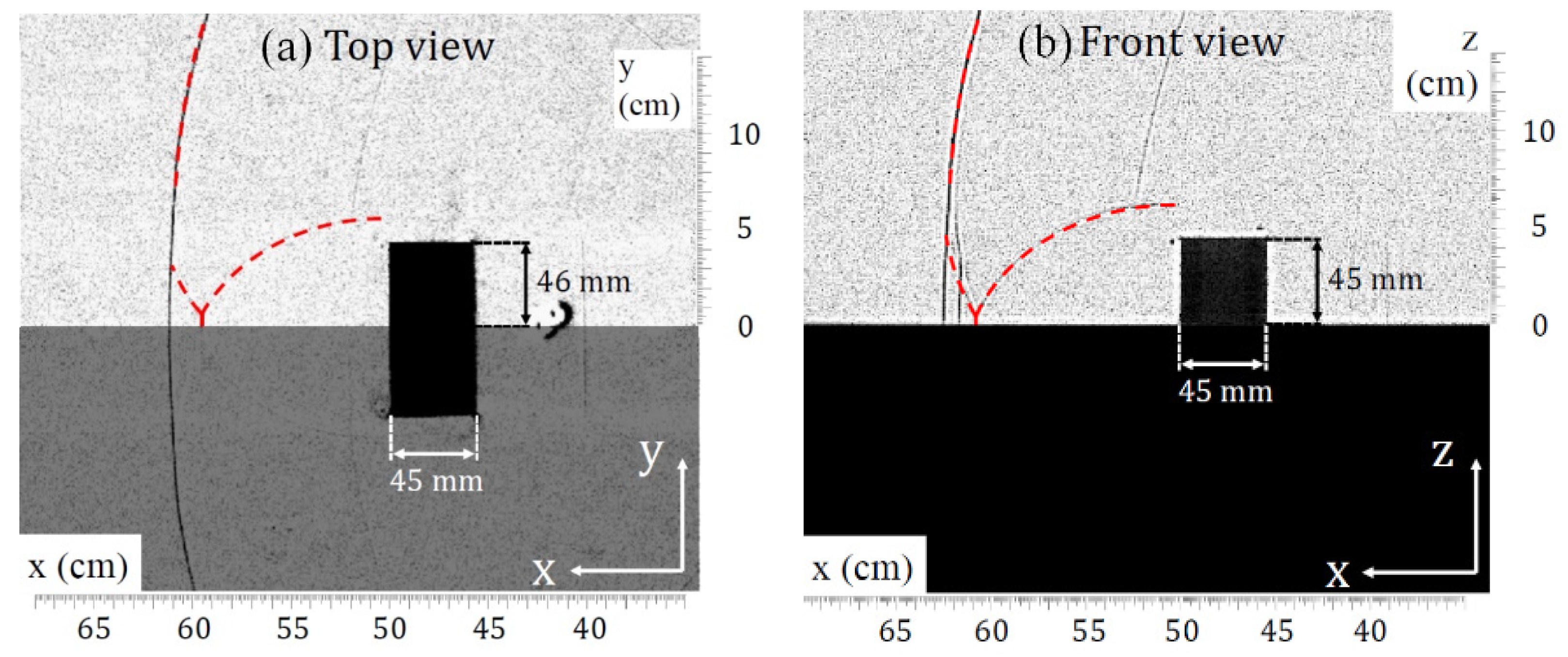
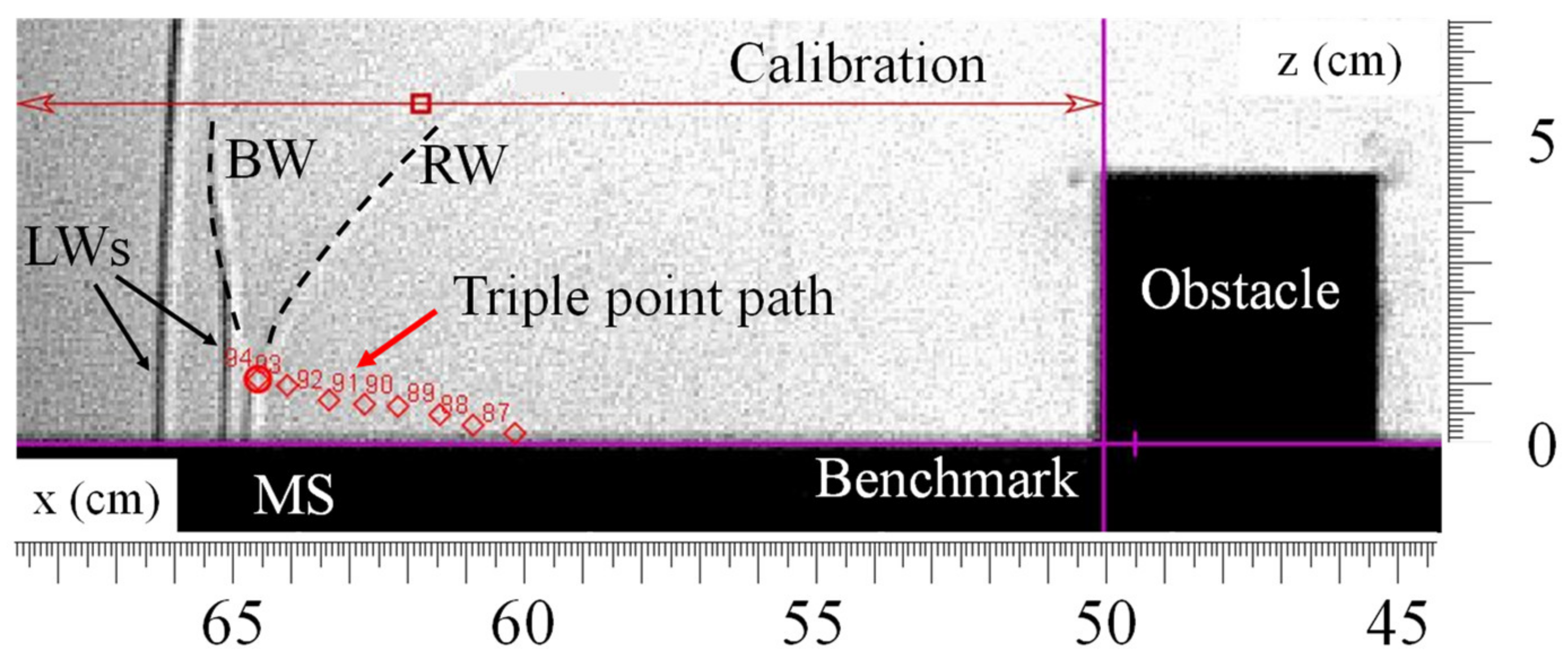
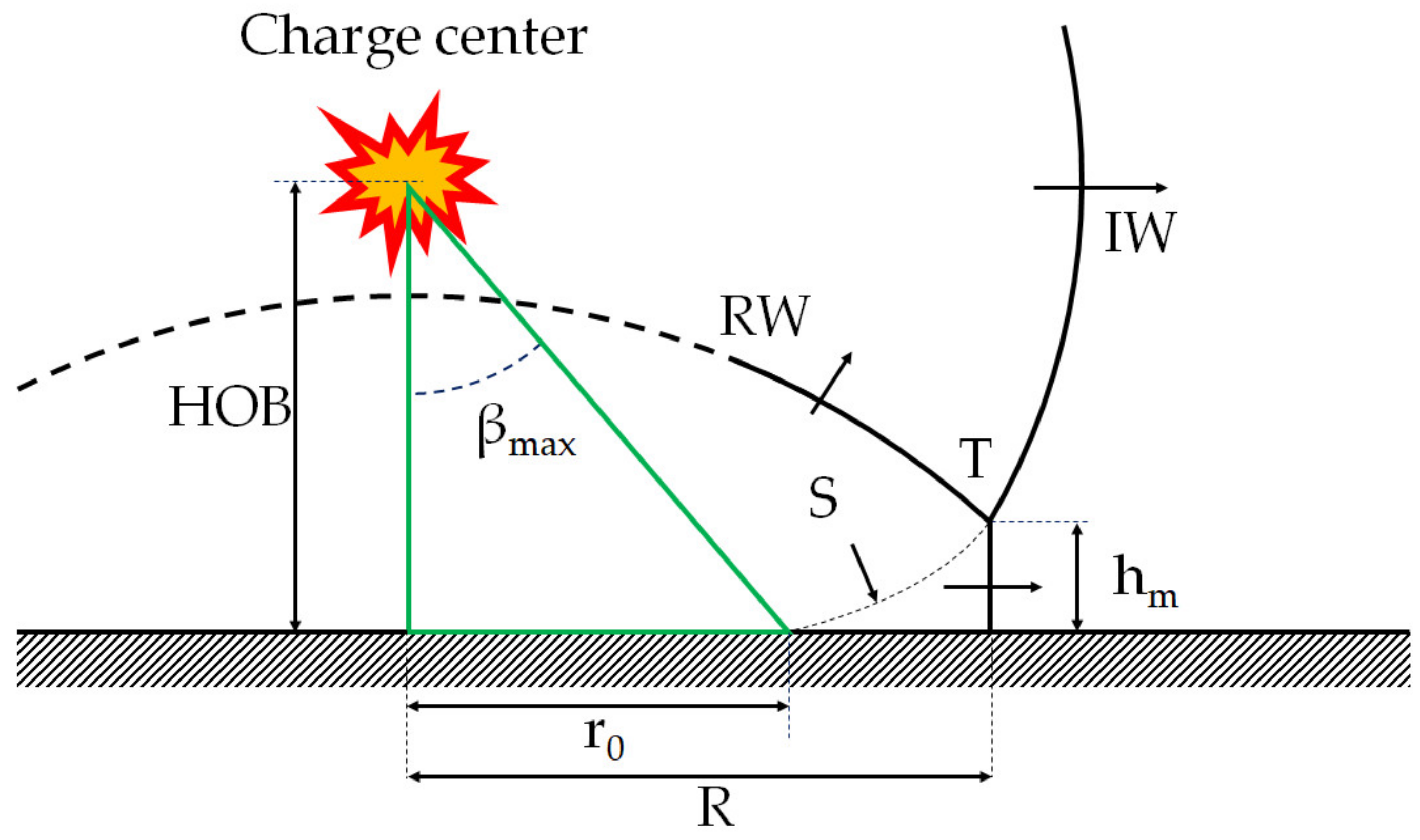

| Sensor Name | Sensitivity (V/bar) | Uncertainty Specific to the Calibration (%) | Pressure Measurement Capacity Range (bar) | Filter Type | Filter Prototype |
|---|---|---|---|---|---|
| S1 | 0.1386 | ±1.3 | 0–34.4 | Low pass | Butterworth |
| S2 | 0.1396 | ||||
| S3 | 0.1443 | ||||
| S4 | 0.1408 |
Publisher’s Note: MDPI stays neutral with regard to jurisdictional claims in published maps and institutional affiliations. |
© 2022 by the authors. Licensee MDPI, Basel, Switzerland. This article is an open access article distributed under the terms and conditions of the Creative Commons Attribution (CC BY) license (https://creativecommons.org/licenses/by/4.0/).
Share and Cite
Gautier, A.; Sochet, I.; Courtiaud, S. Analysis of Shock Wave Interaction with an Obstacle by Coupling Pressure Measurements and Visualization. Sensors 2022, 22, 3325. https://doi.org/10.3390/s22093325
Gautier A, Sochet I, Courtiaud S. Analysis of Shock Wave Interaction with an Obstacle by Coupling Pressure Measurements and Visualization. Sensors. 2022; 22(9):3325. https://doi.org/10.3390/s22093325
Chicago/Turabian StyleGautier, Antoine, Isabelle Sochet, and Sébastien Courtiaud. 2022. "Analysis of Shock Wave Interaction with an Obstacle by Coupling Pressure Measurements and Visualization" Sensors 22, no. 9: 3325. https://doi.org/10.3390/s22093325






